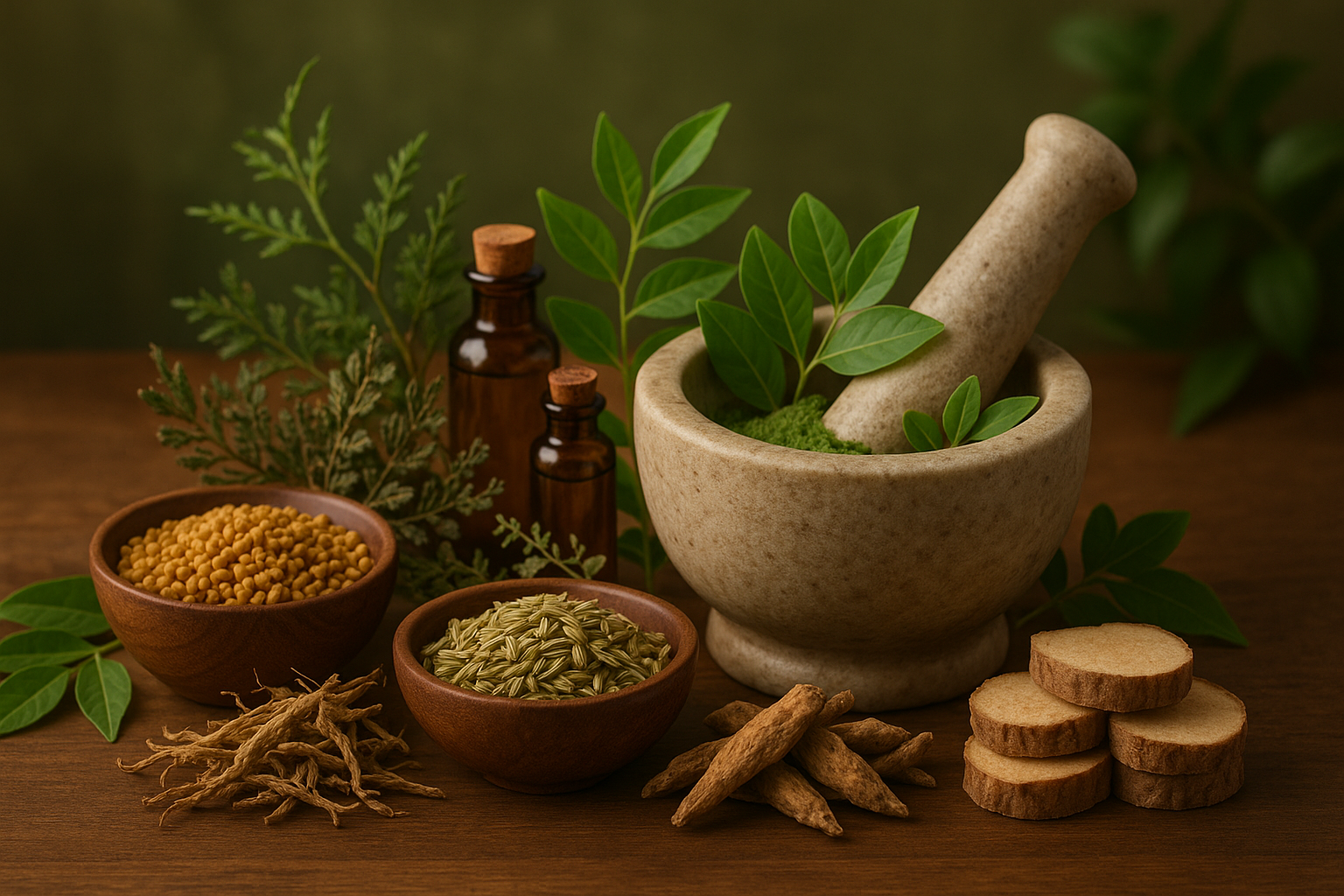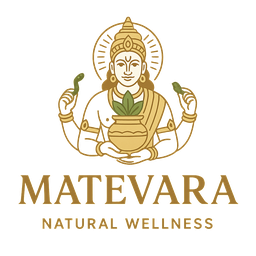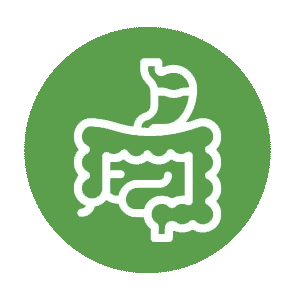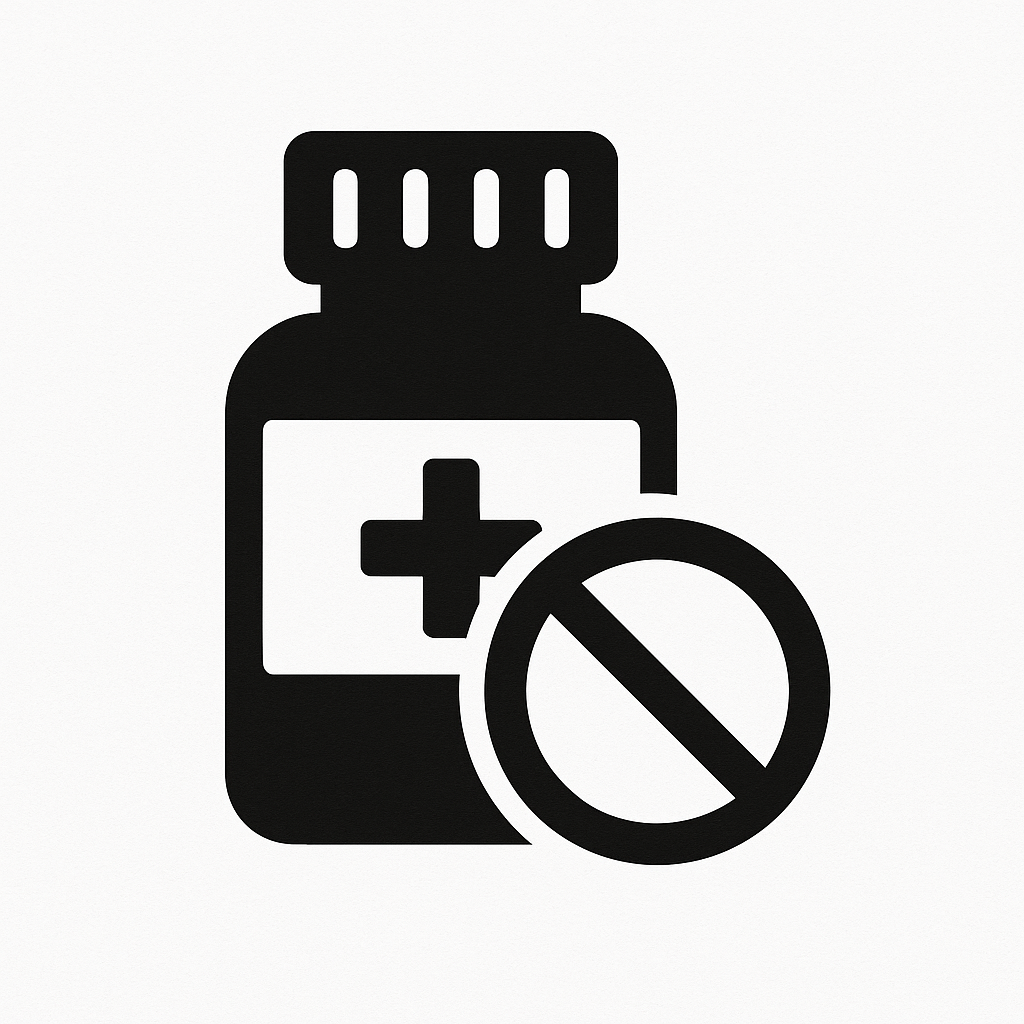
Ayurveda for Natural Breast Firmness: Safer Alternatives to Surgery
Ancient Wisdom for Modern Concerns
Breast firmness is a natural concern for many women, particularly after pregnancy, breastfeeding, weight fluctuations, or as part of the aging process. The modern solution often presented is surgical intervention—breast lifts, augmentation, or other cosmetic procedures. While these options exist, they come with significant costs, risks, and recovery time.
Ayurveda, the 5,000-year-old holistic healing system from India, offers a different perspective. Rather than viewing the body as a collection of isolated parts requiring mechanical fixes, Ayurveda sees breast health as intimately connected to overall wellness, hormonal balance, tissue nutrition, and proper circulation. This ancient system provides natural approaches to support breast tissue health that work with your body's innate healing capabilities.
It's important to establish realistic expectations at the outset: Ayurvedic approaches cannot replicate surgical results, reverse significant tissue changes, or dramatically alter breast size or shape. However, they can support skin elasticity, improve tissue tone, enhance circulation, support hormonal balance, and promote overall breast tissue health—potentially slowing age-related changes and supporting the body's natural vitality.
This comprehensive guide explores Ayurvedic principles for breast health, evidence-based herbal remedies, traditional massage techniques, dietary strategies, and lifestyle practices that honor your body while supporting natural breast firmness.
Understanding Breast Changes: An Ayurvedic Perspective
Why Breast Firmness Changes
From an Ayurvedic perspective, breast tissue changes result from several interconnected factors:
Kapha Imbalance: Breasts are primarily Kapha in nature (the dosha governing structure, moisture, and stability). As we age, Vata (air element) increases while Kapha decreases, leading to loss of structure, moisture, and elasticity.
Rakta and Mamsa Dhatu Depletion: The blood tissue (Rakta dhatu) and muscle tissue (Mamsa dhatu) nourish breast tissue. Depletion of these tissues—through poor nutrition, hormonal changes, or aging—compromises breast firmness.
Rasa Dhatu Imbalance: The plasma/lymphatic tissue (Rasa dhatu) provides initial nourishment to all tissues. Sluggish Rasa circulation leads to inadequate breast tissue nutrition.
Hormonal Transitions: Ayurveda recognizes that life stages (pregnancy, postpartum, menopause) naturally alter tissue quality. Supporting the body through these transitions minimizes adverse changes.
Agni (Digestive Fire) Weakness: Poor digestion means nutrients aren't properly absorbed and transformed into healthy tissue, affecting breast tissue quality.
Contributing Factors in Modern Terms
Beyond Ayurvedic concepts, modern understanding identifies:
- Gravity: Constant gravitational pull over decades stretches Cooper's ligaments (connective tissue supporting breasts)
- Collagen and elastin breakdown: These proteins provide skin elasticity; their degradation with age reduces firmness
- Hormonal fluctuations: Estrogen affects breast tissue fullness; declining levels (particularly during menopause) reduce volume
- Pregnancy and breastfeeding: Dramatic size increases followed by reduction can stretch skin and ligaments
- Weight changes: Significant weight loss can leave excess skin
- Sun damage and free radicals: Oxidative stress degrades collagen
- Smoking: Impairs circulation and accelerates collagen breakdown
- Inadequate support: Poor bra support allows excessive movement and stretching
Ayurvedic approaches address many of these factors through holistic lifestyle, dietary, and herbal interventions.
Ayurvedic Herbs for Breast Health
1. Shatavari (Asparagus racemosus) - The Women's Rejuvenative
Traditional Uses: Shatavari, meaning "she who possesses a hundred husbands," is Ayurveda's premier women's tonic, supporting female reproductive health, hormonal balance, and tissue nourishment.
Benefits for Breast Health:
- Supports healthy estrogen levels and hormonal balance
- Nourishes Rasa and Rakta dhatus, improving tissue quality
- Provides phytoestrogens that may support breast tissue fullness
- Acts as a galactagogue (supports lactation), indicating breast tissue nourishment
- Contains steroidal saponins that support tissue health
- Adaptogenic properties help manage stress (which affects hormones)
Research: Limited specific research on breast firmness exists, but studies show Shatavari supports female reproductive health, hormonal balance, and may have estrogenic effects on tissues.
Usage: 500-1,000mg twice daily of standardized extract, or 1/4-1/2 teaspoon powder with warm milk.
2. Ashwagandha (Withania somnifera) - The Stress-Balancing Adaptogen
Traditional Uses: A powerful adaptogen that strengthens the body, balances hormones, and supports healthy stress response.
Benefits for Breast Health:
- Balances cortisol levels (chronic stress impairs tissue health)
- Supports thyroid function (affects metabolism and tissue quality)
- Provides antioxidant protection against free radical damage
- Supports collagen production through stress hormone balancing
- Improves sleep quality (essential for tissue repair)
- Enhances overall vitality and Ojas (vital essence)
Research: Well-studied for stress reduction, hormonal balance, and overall vitality—all indirect contributors to tissue health.
Usage: 300-600mg twice daily of standardized extract (5% withanolides).
3. Fenugreek (Trigonella foenum-graecum) - The Phytoestrogen Source
Traditional Uses: Used traditionally to support lactation, hormone balance, and tissue nourishment.
Benefits for Breast Health:
- Contains diosgenin, a phytoestrogen that may support breast tissue
- Rich in vitamins and minerals that support skin and tissue health
- Supports hormonal balance during various life stages
- Provides antioxidant protection
- Traditionally used for breast enlargement (though scientific evidence is limited)
Research: Some anecdotal and limited research suggests potential effects on breast tissue, but rigorous scientific evidence is lacking. Best viewed as hormonal support rather than a breast-specific remedy.
Usage: 500-1,000mg daily of seed extract, or 1-2 teaspoons of ground seeds.
4. Wild Yam (Dioscorea villosa) - The Hormone Balancer
Traditional Uses: Used to support hormonal balance, particularly during menopause and menstrual irregularities.
Benefits for Breast Health:
- Contains diosgenin, a precursor to progesterone (though the body cannot convert it directly)
- May support overall hormonal balance through plant compounds
- Anti-inflammatory properties support tissue health
- Traditionally used for various women's health concerns
Research: While often marketed for breast enhancement, scientific evidence doesn't support significant effects. However, it may offer modest hormonal support benefits.
Usage: 200-400mg daily of standardized extract.
5. Anantamul (Hemidesmus indicus) - The Blood Purifier
Traditional Uses: A blood purifier and cooling herb that supports healthy skin and tissue.
Benefits for Breast Health:
- Purifies blood (Rakta dhatu), improving tissue nutrition
- Cooling properties balance Pitta and support skin health
- Supports healthy circulation to tissues
- Rich in antioxidants that protect against oxidative stress
- Traditionally used for skin health and complexion
Usage: 500mg twice daily of extract, or 1/4 teaspoon powder.
6. Lodhra (Symplocos racemosa) - The Tissue Toner
Traditional Uses: Specifically used for female reproductive health and tissue toning.
Benefits for Breast Health:
- Traditional use for "firming tissues" throughout the body
- Supports healthy estrogen metabolism
- Astringent properties may support tissue tone
- Anti-inflammatory effects support tissue health
Usage: 500mg once or twice daily of extract.
Ayurvedic Oils and Massage Techniques
Traditional Breast Massage (Stana Abhyanga)
Ayurvedic breast massage isn't about enlargement—it's about improving circulation, supporting lymphatic drainage, maintaining skin elasticity, and fostering body awareness and self-care.
Benefits of Regular Breast Massage:
- Improves blood circulation, bringing nutrients to tissues
- Enhances lymphatic drainage, removing cellular waste
- Maintains skin suppleness through oil application
- May help detect lumps or changes early (important for breast health screening)
- Provides stress relief and body connection
- Supports hormonal balance through gentle stimulation
Recommended Oils:
Sesame Oil (Til Taila): The classic Ayurvedic massage oil, warming and nourishing, ideal for Vata types and cold climates.
Almond Oil: Light, nourishing, suitable for all doshas, rich in vitamin E for skin health.
Fenugreek-Infused Oil: Prepared by infusing fenugreek seeds in sesame or almond oil; traditionally used for breast tissue support.
Shatavari-Infused Oil: Prepared with Shatavari, supporting female tissue health.
Essential Oil Blends: Add small amounts of fennel, clary sage, or geranium essential oils (properly diluted) for additional hormonal support properties—always dilute essential oils in carrier oils (2-3 drops per tablespoon).
Proper Massage Technique
Preparation:
- Warm oil slightly (not hot)
- Create a calm, private space
- Stand or sit comfortably before a mirror
- Deep breaths to relax
Technique:
- Apply warm oil to both breasts
- Using flat fingers (not just fingertips), massage in gentle circular motions moving from outside toward center, then upward
- Never massage roughly or use excessive pressure
- Include chest muscles above and around breasts
- Massage for 5-10 minutes total
- Follow with warm shower or leave oil on for 20-30 minutes before bathing
Frequency: 2-4 times weekly for maintenance; daily during intensive support phases.
Important Cautions:
- Avoid massage if you have breast lumps, pain, infections, or are pregnant without medical clearance
- Never massage aggressively—gentleness is key
- Discontinue if any pain, redness, or adverse reactions occur
- Breast massage is not a substitute for regular medical breast examinations
Dietary Strategies for Breast Health
Ayurvedic Dietary Principles
Eat According to Your Dosha: Individualized nutrition supports overall health, which reflects in tissue quality.
Emphasize Ojas-Building Foods: Ojas (vital essence) supports immunity, vitality, and tissue health. Ojas-promoting foods include:
- Warm milk with spices (if you tolerate dairy)
- Dates and figs
- Almonds and cashews (soaked)
- Sweet, ripe fruits
- Ghee (clarified butter)
- Whole grains like rice and oats
Support Digestive Fire (Agni): Without strong digestion, even nutritious foods won't properly nourish tissues. Support Agni through:
- Eating at regular times
- Avoiding overeating
- Including digestive spices (ginger, cumin, coriander, fennel)
- Eating freshly prepared, warm foods
- Avoiding excessive cold, raw, or heavy foods
Include Healthy Fats: Breast tissue requires healthy fats for structure and hormone production:
- Ghee (clarified butter)
- Sesame oil
- Coconut oil
- Avocados
- Nuts and seeds
Prioritize Protein: Adequate protein supports tissue repair and collagen production:
- Lentils and beans
- Organic dairy (if tolerated)
- Nuts and seeds
- Quinoa and whole grains
- For non-vegetarians: organic, grass-fed options
Consume Phytoestrogen-Rich Foods: These plant compounds may offer mild estrogenic effects:
- Flaxseeds
- Sesame seeds
- Chickpeas and lentils
- Soy products (organic, fermented preferred)
- Fenugreek seeds
Antioxidant-Rich Foods: Protect against free radical damage:
- Colorful fruits and vegetables
- Berries
- Dark leafy greens
- Spices like turmeric, cinnamon, cardamom
Hydration: Adequate water supports Rasa dhatu circulation and skin hydration.
Foods to Minimize
- Excessive caffeine (depletes tissues)
- Alcohol (impairs liver function and hormone metabolism)
- Processed foods and refined sugars (create inflammation)
- Trans fats (damage cellular health)
- Excessive salt (causes water retention and inflammation)
Lifestyle Practices for Breast Health
1. Proper Breast Support
Choose Quality Bras: Well-fitted, supportive bras reduce gravitational stress on Cooper's ligaments, particularly important during exercise.
Get Professionally Fitted: Most women wear incorrect sizes; proper fitting ensures adequate support.
Avoid Underwires During Sleep: Allow nighttime circulation and lymphatic flow.
Sports Bras for Exercise: High-impact activities require specialized support to minimize breast movement.
2. Posture Awareness
Maintain Good Posture: Slouching causes breasts to sag over time. Practice:
- Shoulders back and down
- Chest open and lifted
- Core engaged
- Regular posture checks throughout the day
Yoga for Posture: Poses like Mountain Pose (Tadasana), Cobra Pose (Bhujangasana), and Triangle Pose (Trikonasana) strengthen postural muscles.
3. Targeted Exercises
While exercises cannot "firm" breast tissue itself (breasts contain no muscle), strengthening underlying pectoral muscles improves appearance:
Push-ups: Strengthen chest muscles supporting breasts Chest presses: Target pectorals effectively Chest flies: Isolate pectoral muscles Swimming: Excellent for chest muscle development Yoga: Specific poses strengthen chest and improve posture
Practice regularly: 2-4 times weekly for visible results within 2-3 months.
4. Stress Management
Chronic Stress and Hormones: Elevated cortisol disrupts estrogen balance, affecting breast tissue.
Ayurvedic Stress Reduction:
- Meditation: 10-20 minutes daily
- Pranayama (breathing exercises): Nadi Shodhana (alternate nostril breathing)
- Yoga: Regular practice balances mind and body
- Adequate sleep: 7-8 hours nightly
- Nature time: Grounding and calming
- Abhyanga (self-massage): Beyond breasts, full-body oil massage reduces stress
5. Skin Care
Sun Protection: UV damage breaks down collagen; protect chest and breast skin.
Moisturization: Regular application of natural oils maintains skin elasticity.
Exfoliation: Gentle exfoliation (1-2 times weekly) promotes cellular turnover.
Cold Water Rinses: Ending showers with cool water on breasts may temporarily tighten skin and improve circulation.
6. Avoid Harmful Habits
Don't Smoke: Smoking accelerates collagen breakdown and impairs circulation.
Limit Alcohol: Affects hormone metabolism and tissue health.
Avoid Crash Diets: Rapid weight loss causes skin laxity; maintain stable, healthy weight through balanced nutrition.
Realistic Expectations and Timeline
What Ayurvedic Approaches Can Do
Support skin elasticity and hydration: Through oil massage and internal nourishment Improve circulation: Enhancing nutrient delivery to tissues Support hormonal balance: Through adaptogenic herbs and lifestyle practices Strengthen supporting muscles: Through exercise, improving breast positioning Slow age-related changes: By supporting overall tissue health Enhance body awareness: Fostering positive relationship with your body
What They Cannot Do
Reverse significant tissue changes: Severe sagging or laxity from pregnancy, major weight loss, or aging cannot be fully reversed without surgery Dramatically change size or shape: Natural approaches have modest effects on structure Work quickly: Natural methods require months of consistent practice for visible results Replace medical interventions when needed: Ayurveda complements but doesn't replace necessary medical care
Timeline for Results
1-2 months: Improved skin texture and hydration, better body awareness, stress reduction 2-4 months: Subtle improvements in tissue tone, enhanced circulation, potential modest changes in appearance 4-6 months: More noticeable improvements in skin elasticity, muscle tone affecting breast positioning 6+ months: Cumulative benefits of hormonal support, tissue nourishment, and lifestyle practices
Consistency is crucial: Sporadic practice yields minimal results; daily habits create change.
Safety Considerations and When to See a Doctor
Important Cautions
Herbs Aren't Risk-Free: Natural doesn't mean safe for everyone. Potential concerns include:
- Hormonal herbs may not be appropriate for hormone-sensitive conditions
- Interactions with medications (particularly hormone therapy, blood thinners)
- Allergic reactions are possible with any herb
- Pregnancy and breastfeeding: Many herbs are contraindicated
Consult Healthcare Providers:
- Before starting herbs if you have health conditions
- If taking medications (especially hormonal treatments)
- If pregnant, trying to conceive, or breastfeeding
- If you have hormone-sensitive conditions (certain cancers, endometriosis, PCOS)
When Medical Evaluation Is Necessary
See your doctor immediately if you notice:
- New lumps or masses in breast tissue
- Persistent breast pain
- Nipple discharge (especially bloody)
- Skin changes (dimpling, redness, thickening)
- Significant size changes in one breast
- Any concerning changes
Regular screenings: Continue recommended mammograms and breast exams regardless of natural health practices.
Ayurveda as Complementary Care
View Ayurvedic approaches as complementary to modern medicine, not replacements. For significant concerns about breast appearance affecting quality of life, discussing options with a qualified plastic surgeon is appropriate. Ayurvedic practices can support overall health before and after any medical interventions.
Creating Your Personalized Breast Health Protocol
Basic Daily Routine
Morning:
- Warm water with lemon upon waking
- Oil massage 3-4 times weekly (5-10 minutes)
- Shatavari supplement with breakfast
- Posture awareness throughout the day
Afternoon:
- Balanced, nourishing lunch (largest meal)
- Herbal tea with fenugreek or fennel
- Chest-strengthening exercises (3-4 times weekly)
Evening:
- Ashwagandha supplement with dinner
- Yoga or gentle stretching
- Meditation or breathing exercises (10-20 minutes)
- Early bedtime (before 10 PM ideally)
Weekly Practices
- Specialized breast massage with herbal oils (2-4 times)
- Chest-focused strength training (2-3 sessions)
- Meal planning with phytoestrogen-rich and Ojas-building foods
- Self-reflection and body appreciation practices
Monthly Check-Ins
- Assess progress with mirror (same lighting, position)
- Adjust herbs or dosages as needed
- Perform breast self-examinations
- Schedule professional fittings for supportive bras
- Review and renew commitment to practices
Embracing Body Positivity
Perhaps the most important aspect of this journey is cultivating appreciation for your body as it is. Breasts naturally change throughout life, and these changes tell the story of your experiences—motherhood, hormonal transitions, aging, living.
While supporting breast health through Ayurvedic practices is valuable, it's equally important to:
- Practice gratitude: For your body's capabilities and resilience
- Challenge unrealistic standards: Media images often show surgical or digitally altered bodies
- Focus on function: Appreciate what your breasts have done (nourished babies, provided pleasure, enhanced femininity)
- Cultivate self-compassion: Treat yourself with kindness regarding body changes
- Remember: Beauty includes confidence, vitality, and inner radiance—qualities Ayurveda explicitly cultivates
Conclusion: Honoring Your Body's Wisdom
Ayurveda offers gentle, holistic approaches to supporting breast tissue health that honor your body's natural wisdom. Through time-tested herbs, nourishing oils, mindful massage, balanced nutrition, and lifestyle practices, you can support skin elasticity, improve circulation, balance hormones, and enhance overall tissue vitality.
These practices won't replicate surgical results, but they offer something surgery cannot: a comprehensive approach to wellness that benefits your entire being, not just isolated body parts. The herbs that support breast tissue also reduce stress, balance hormones, and enhance vitality. The massages that may improve skin tone also provide stress relief and body awareness. The dietary practices that nourish tissues also support digestive health and energy.
Ultimately, Ayurvedic breast care is about more than appearance—it's about respecting and supporting your body through all its natural transitions with grace, wisdom, and self-love.
Ready to explore natural approaches to women's wellness? Discover high-quality supplements supporting hormonal balance, tissue health, and overall vitality at Matevara's Women's Health Collection. Find Ayurvedic herbs, hormone-balancing formulas, and comprehensive wellness products designed to support women through all life stages.
Honor your body. Support your health. Embrace your natural beauty.
Disclaimer: This article is for informational purposes only and does not constitute medical advice. Ayurvedic herbs and practices are not intended to diagnose, treat, cure, or prevent any disease. Breast changes can indicate serious medical conditions; always maintain regular medical breast exams and mammogram schedules. Consult qualified healthcare providers before starting herbs, especially if you have hormone-sensitive conditions, take medications, are pregnant, or are breastfeeding. Individual results vary significantly. Ayurvedic approaches cannot replace surgical interventions when substantial changes to breast appearance are desired. This information should not delay appropriate medical evaluation or treatment.
Share








